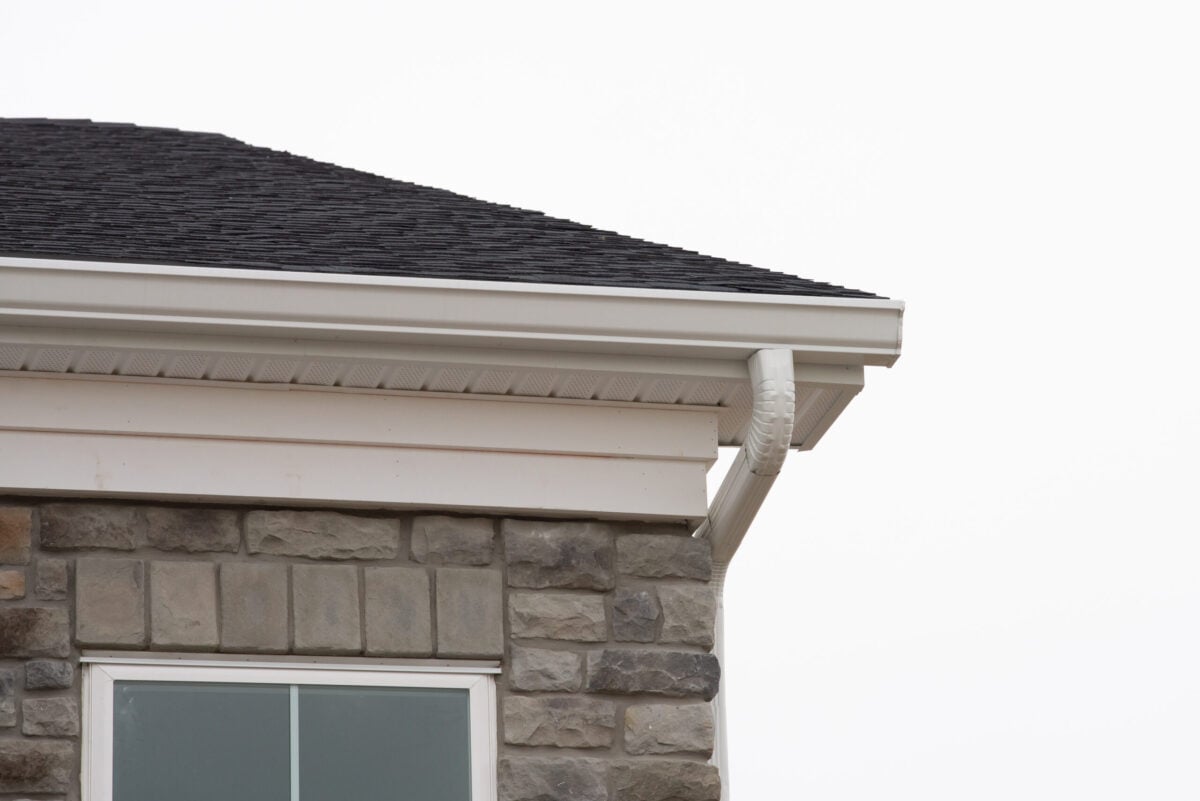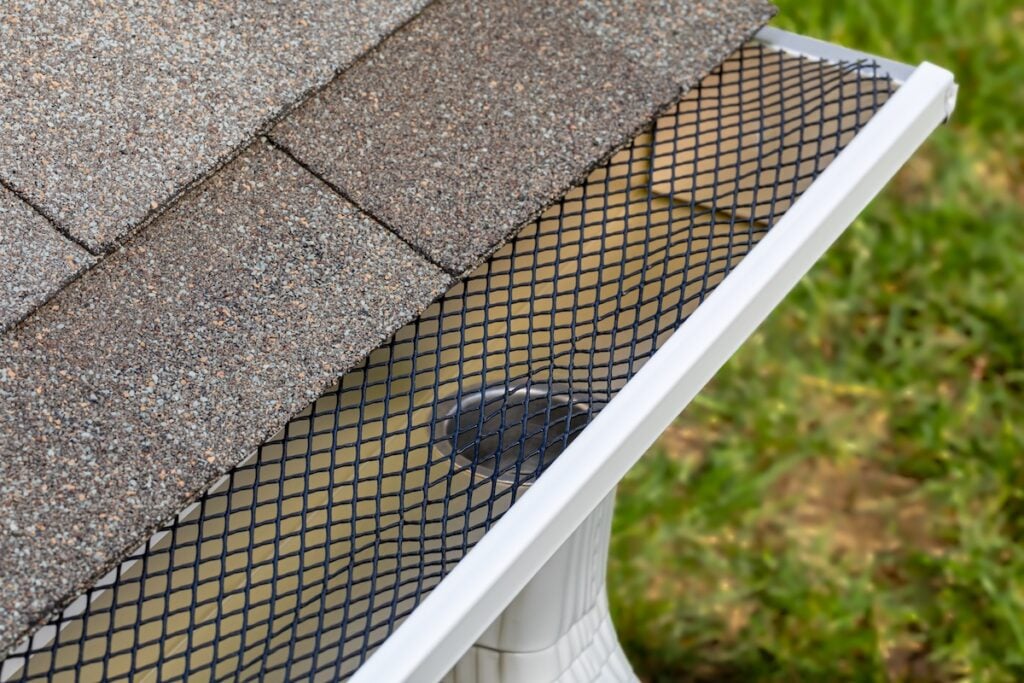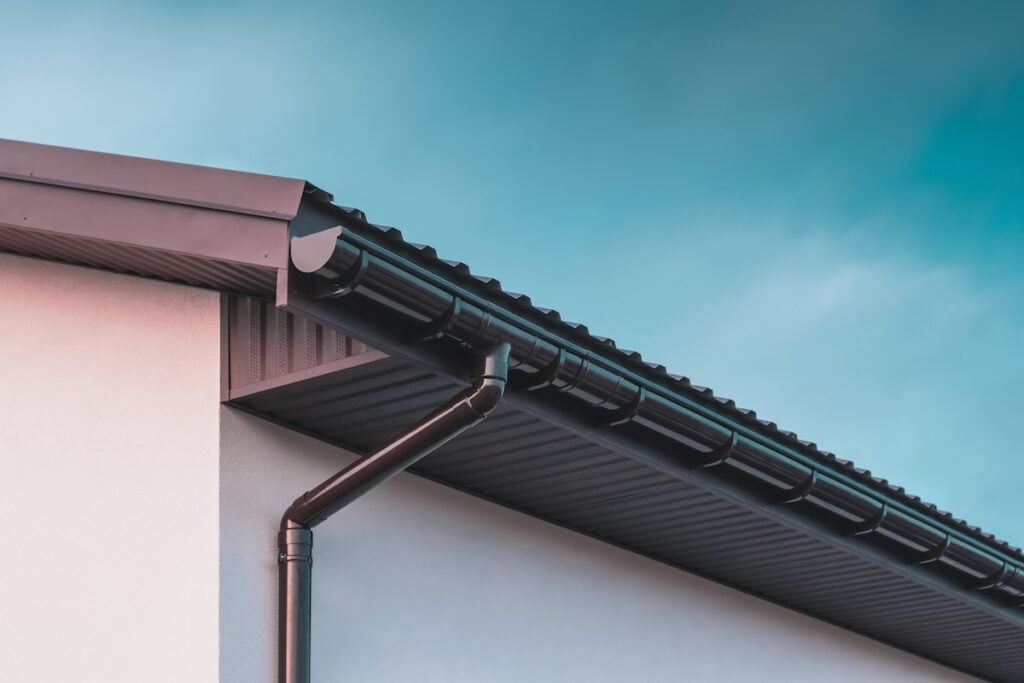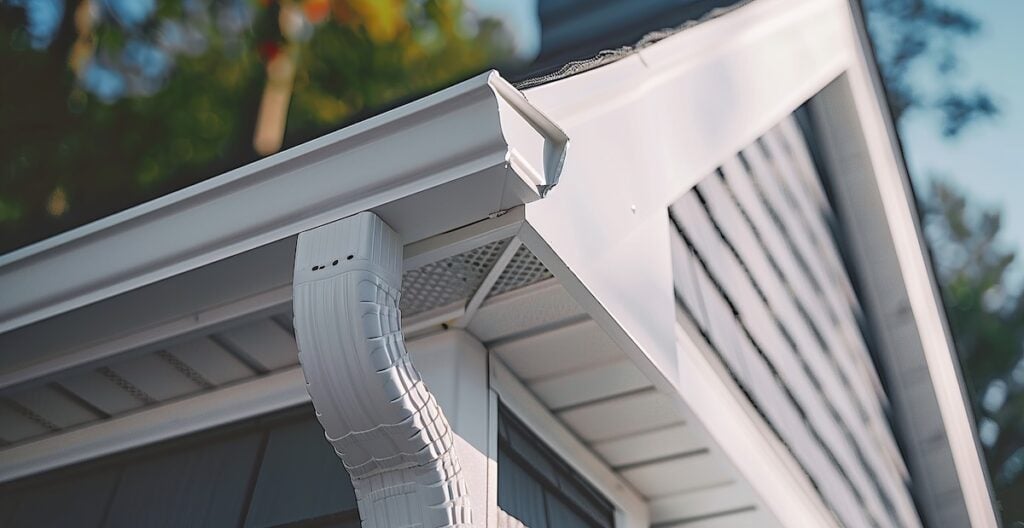
What Is The Best Roof Drainage System For Your Home?

When it comes to protecting your home from water damage, choosing the right roof drainage system is crucial. A properly functioning drainage system directs rainwater away from your roof, walls, and foundation, preventing costly repairs and structural issues. With Florida’s intense weather conditions, understanding your drainage options can make the difference between a dry, secure home and expensive water damage repairs.
This comprehensive guide covers everything you need to know about roof drainage systems, including:
- Different types of drainage systems and their benefits
- Installation and maintenance requirements
- Key factors to consider when selecting a system
🔎 Understanding Roof Drainage Systems

A roof drainage system is your home’s first line of defense against water damage. These systems collect rainwater from your roof surface and direct it safely away from your home’s foundation and landscaping. Without proper drainage, water can pool on your roof, seep into your home, or cause foundation problems that cost thousands of dollars to repair.
The basic components of any roof drainage system include collection points, channels or gutters, downspouts, and ground-level drainage solutions. Each component plays a vital role in moving water efficiently from your roof to a safe discharge point.
Why Proper Drainage Matters
Florida homeowners face unique challenges with heavy rainfall, tropical storms, and hurricanes. A reliable roof drainage system protects your home by:
- Preventing water pooling on flat or low-slope roofs
- Reducing the risk of leaks and interior water damage
- Protecting your foundation from water-related issues
- Maintaining your home’s structural integrity
- Preserving your landscaping and outdoor spaces
💧 5 Best Roof Drainage Systems for Florida Homes

Based on performance, durability, and suitability for Florida’s climate, here are the top drainage systems to consider:
1. Seamless Aluminum Gutters with Leaf Guards
Seamless aluminum gutters with leaf guards offer a reliable and low-maintenance solution for managing rainwater on your property. The seamless design eliminates the gaps and joints found in traditional gutter systems, significantly reducing the risk of leaks and ensuring water flows smoothly. Leaf guards further enhance the system by preventing leaves, twigs, and other debris from clogging the gutters, meaning you’ll spend less time on ladder cleanups. Made from rust-resistant aluminum, this system is perfect for areas like Florida, where high humidity levels or salty coastal air can quickly corrode other materials. With their lightweight yet durable construction, these gutters are an affordable and effective choice for protecting your home.
Best for: Traditional sloped roofs, homes surrounded by trees, and homeowners looking for a hassle-free, long-term solution to gutter maintenance.
2. Copper Gutter Systems
Copper gutter systems are the premium choice for homeowners who value durability, aesthetics, and long-term performance. Over time, the shiny copper surface develops a striking patina, giving homes a unique and elegant appearance that enhances curb appeal. These gutters are highly resistant to corrosion, even in harsh weather conditions, ensuring they remain functional and beautiful for decades—often lasting over 50 years with regular upkeep. While they come with a higher upfront cost compared to other materials, their longevity and minimal repair needs make them a worthwhile investment. Additionally, copper gutters can be customized to fit any architectural style, making them particularly popular for historic homes and upscale properties.
Best for: Historic homes, luxury properties, and homeowners who want a blend of timeless beauty and exceptional durability.
3. Built-in Roof Drains for Flat Roofs
Built-in roof drains are a must-have for flat or low-slope roofs, where traditional gutters may not be effective. These systems are specifically designed to handle large volumes of water by channeling it away through integrated drains that are part of the roof structure. Unlike surface gutters, built-in drains work discreetly, maintaining the sleek look of flat roof designs while ensuring efficient water removal. This system pairs well with modern roofing materials and is ideal for both residential and commercial properties. Whether you’re dealing with heavy downpours or slow, steady rainfall, built-in roof drains ensure water doesn’t pool, which could otherwise cause damage to your roof or foundation.
Best for: Flat or low-slope roofs, commercial-style buildings, and contemporary architectural designs that prioritize functionality and aesthetics.
4. Combination Gutter and French Drain Systems
A combination of gutters and French drains provides the ultimate drainage solution for homes facing persistent water management challenges. This two-pronged approach starts with traditional gutters that collect rainwater from your roof. The water is then directed into underground French drain systems, which transport it away from your home’s foundation. By preventing water from pooling around your property, this system reduces the risk of erosion, cracks in your foundation, and basement flooding. It’s an especially effective solution for homes with poor soil drainage or those located in flood-prone areas. While the installation process can be more complex, the comprehensive protection it offers makes it worth the investment.
Best for: Homes with difficult drainage issues, properties with clay or compacted soil, and regions with heavy rainfall or flooding concerns.
5. Scupper-Based Drainage Systems
Scupper-based drainage systems are a simple yet highly effective option for managing water on flat roofs. These systems use scuppers—openings in the parapet walls or edges of flat roofs—that allow water to flow off at specific points. Because there are no pipes or underground drains involved, scupper systems are less prone to clogging from debris like leaves or dirt, making them easier to maintain over time. They are also a budget-friendly solution when compared to more complex drainage setups. Scupper systems are ideal for minimalist roof designs and areas where debris accumulation is minimal. Despite their simplicity, they are efficient and reliable for keeping water off your roof and away from your home.
Best for: Flat roofs, minimalist architectural designs, regions with light debris, and homeowners looking for an affordable solution to roof drainage.
👉 Key Factors When Choosing Your Drainage System

Selecting the right roof drainage system depends on several important factors specific to your home and location.
Your Roof Type and Design
The type and design of your roof play a critical role in determining the best drainage system for your home. The slope, style, and complexity of the roof structure influence how water flows and drains. Steep-sloped roofs, for instance, naturally shed water quickly due to gravity, making them ideal for traditional gutter systems that can efficiently divert water away from the foundation. However, flat or low-slope roofs do not have the same natural water-shedding ability. These roofs require more advanced drainage solutions, such as internal drains, scuppers, or even custom-engineered systems, to prevent water pooling and potential damage.
Complex roof designs, such as hip roofs with multiple slopes, gable roofs with sharp edges, or intricately designed roofs with multiple valleys, can create unique water flow patterns. These designs often present additional challenges, as water can accumulate in certain areas or flow unpredictably. A professional assessment of your specific roof configuration is essential to identify potential weak points and recommend the most effective drainage strategy. Whether your roof is simple or intricate, ensuring proper water management is crucial for protecting your home from leaks, structural damage, and long-term wear and tear.
Climate Considerations
Your local climate is another critical factor when choosing an effective drainage system. Florida, for example, experiences a subtropical climate characterized by intense rainfall, high humidity, and frequent severe weather events, such as tropical storms or hurricanes. These conditions demand a drainage system that is not only capable of managing large volumes of water but also durable enough to withstand corrosion and storm damage over time.
In areas with heavy rainfall, the intensity and frequency of storms can vary widely. Some regions may see short, intense downpours that overwhelm standard gutter systems, while others experience steady rainfall over longer periods that require consistent water management. To protect your home, your drainage system must be designed to accommodate both scenarios, with features such as larger downspouts, splash blocks, or rain chains to handle high water flow. Additionally, high humidity levels in Florida can accelerate rust and corrosion in metal components, so investing in corrosion-resistant materials like aluminum, stainless steel, or vinyl can ensure your drainage system remains functional and reliable for years to come.
Budget and Long-term Value
When choosing a drainage system for your roof, it’s important to balance upfront costs with long-term value. While it might be tempting to opt for the most affordable solution initially, cheaper systems often come with hidden costs, such as frequent maintenance, repairs, or even early replacement. Investing in a high-quality system can save you significant money in the long run, as these systems are designed to last longer, require less upkeep, and perform more reliably over time.
Installation costs are another key consideration. Custom systems for complex roof designs or advanced drainage options, such as internal drains or rainwater harvesting systems, may have higher initial costs but offer greater efficiency and durability. It’s also essential to account for ongoing maintenance requirements. Standard gutters, for example, may require regular cleaning to remove debris, while more advanced systems could reduce maintenance needs through self-cleaning features or built-in debris filters.
🏠 Protect Your Home with Professional Drainage Solutions
In conclusion, a reliable roof drainage system is crucial for protecting your home from Florida’s unpredictable weather. At Greentek Roofing & Solar, we take pride in delivering tailored solutions that stand the test of time. With our certifications as a GAF Master Elite Contractor and TAMKO Pro Diamond certified company, you can trust our team’s expertise and commitment to excellence.
Don’t leave your home’s protection to chance—contact Greentek Roofing & Solar today for a consultation and let us help you safeguard your home with a drainage system you can depend on.

